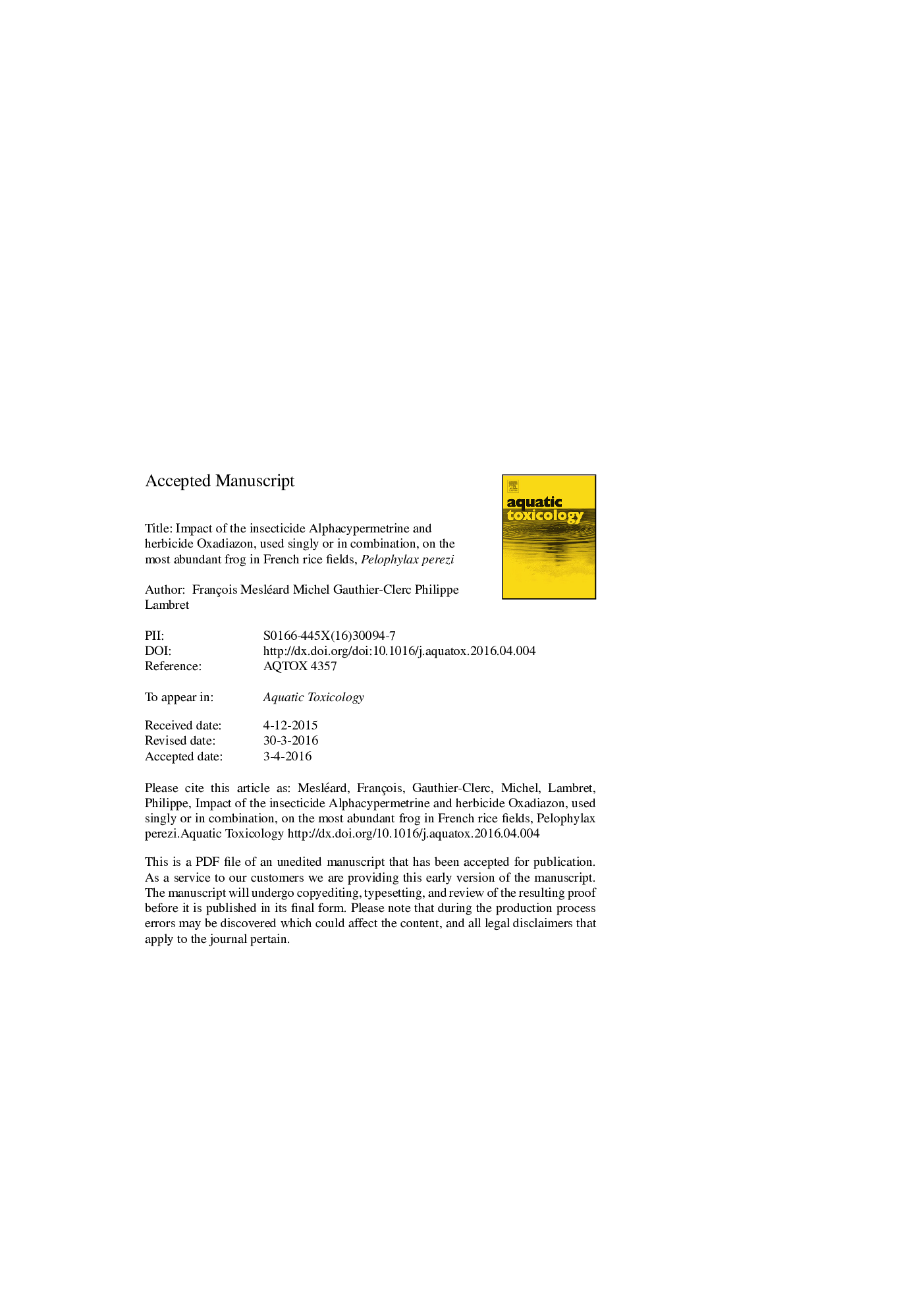| Article ID | Journal | Published Year | Pages | File Type |
|---|---|---|---|---|
| 6381930 | Aquatic Toxicology | 2016 | 22 Pages |
Abstract
The potential impact of agricultural pesticides is a major concern with regard to biodiversity conservation. Pesticides are considered as one of the main causes of the worldwide decline of Amphibians. They are rarely used singly, but their cumulative impact and interaction are often neglected, as is the importance of the age or stage of the animal on which the impact of the molecules is assessed. We therefore tested the potential cumulative impact of the only authorized insecticide (Alphacypermetrine) and the main herbicide (Oxadiazon) used in French rice fields on four replicates of 25 eggs, young larvae and prometamorphosis tadpoles of the most abundant frog in paddies (Pelophylax perezi). We found no significant effect of the insecticide and herbicide, used singly or in combination, on hatching and young tadpoles. However, we found a strong impact of insecticide and herbicide used singly and a highly deleterious impact of their combined use on prometamorphosis tadpoles. Among the four replicates, only one of the prometamorphosis tadpoles did not reach this adult stage in the control against 9, 9, 6, 4 and 13, 9, 8, 7 with the herbicide and insecticide, respectively. But when the two pesticides were used in combination, only two prometamorphosis tapdoles reached the adult stage. Our results emphasize the potential impact on amphibians of pesticides used in agriculture and highlight the necessity of testing their role as cocktails. They also stress the importance of the age and/or stage of the target organism, the choice of which can lead to contrasting conclusions. Finally, our results suggest a possible underestimation of the impact of pesticides on non-targeted fauna in the rice fields in particular, and on living organisms in general.
Keywords
Related Topics
Life Sciences
Agricultural and Biological Sciences
Aquatic Science
Authors
François Mesléard, Michel Gauthier-Clerc, Philippe Lambret,
